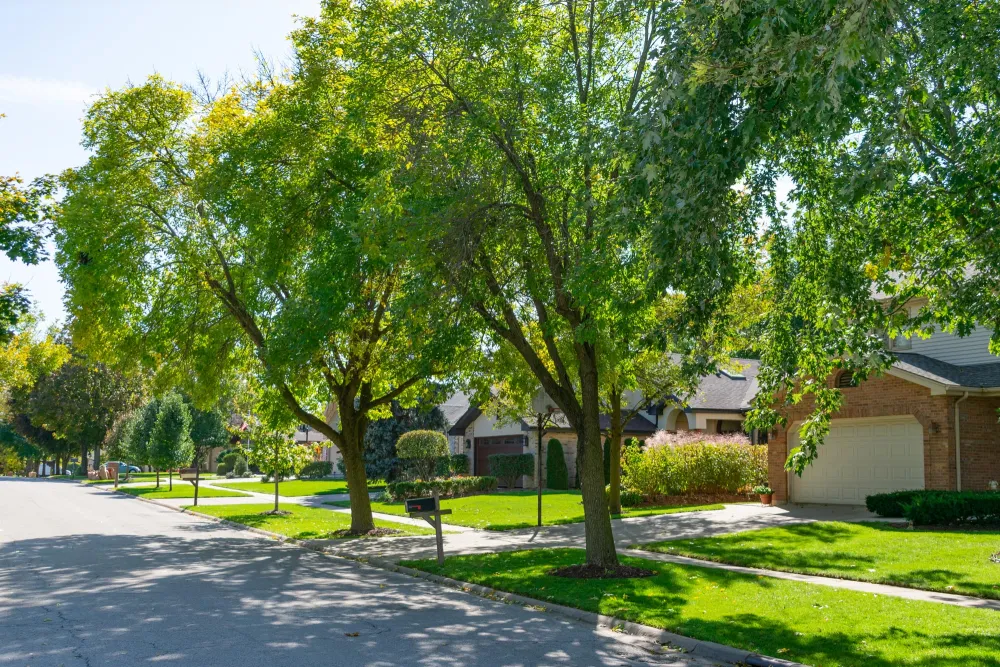Now live: The 2025 Canopy Report. Learn how Americans see trees. GET THE REPORT
Bulletin
Urban Trees and Private Property
The benefits of trees have been well-documented and are widely known. But to maximize these benefits, trees in residential yards and elsewhere on private property must be considered if management strategies are to achieve their optimal effectiveness for the community.

There are an estimated 5.5 billion trees in the urban forests of the United States, providing a multitude of benefits to the 81% of Americans who live in urbanized areas.
However, only about 20% of those trees are on public land such as parks or on rights-of-way where planting strips are commonly used for street trees. Together, urban trees are said to provide a value of more than $2.4 trillion in environmental services and other benefits.
Many legal and economic scholars state that the benefits of urban trees can be considered a “public good.” However, if 80–85% of the producers of this public good are on private property, it is easy to see a politically charged dilemma. Since the days of James Madison, arguments have been made for sanctity of property rights. So where does urban forestry stand in the collision of the two concepts — property rights and public good?
Clearly, planting and management of trees on the private portions of a community have great potential for increasing the amount and diversity of the city’s tree canopy and helping to ensure other healthful conditions of the urban forest as a whole. In this bulletin, we showcase several ways cities throughout the country are working to respect private property rights while at the same time making a positive impact on what happens to the trees on privately held parcels.
In This Bulletin
Here’s what’s inside:
- The Philadelphia Story – the power of finding unique solutions to address the lack of trees on private property
- Tree Distribution Strategies – effective methods for adding private property trees to the urban canopy
- Regulating Privately Owned Trees – how ordinances can help
- Action Through Education – engaging citizens through a better understanding of trees
